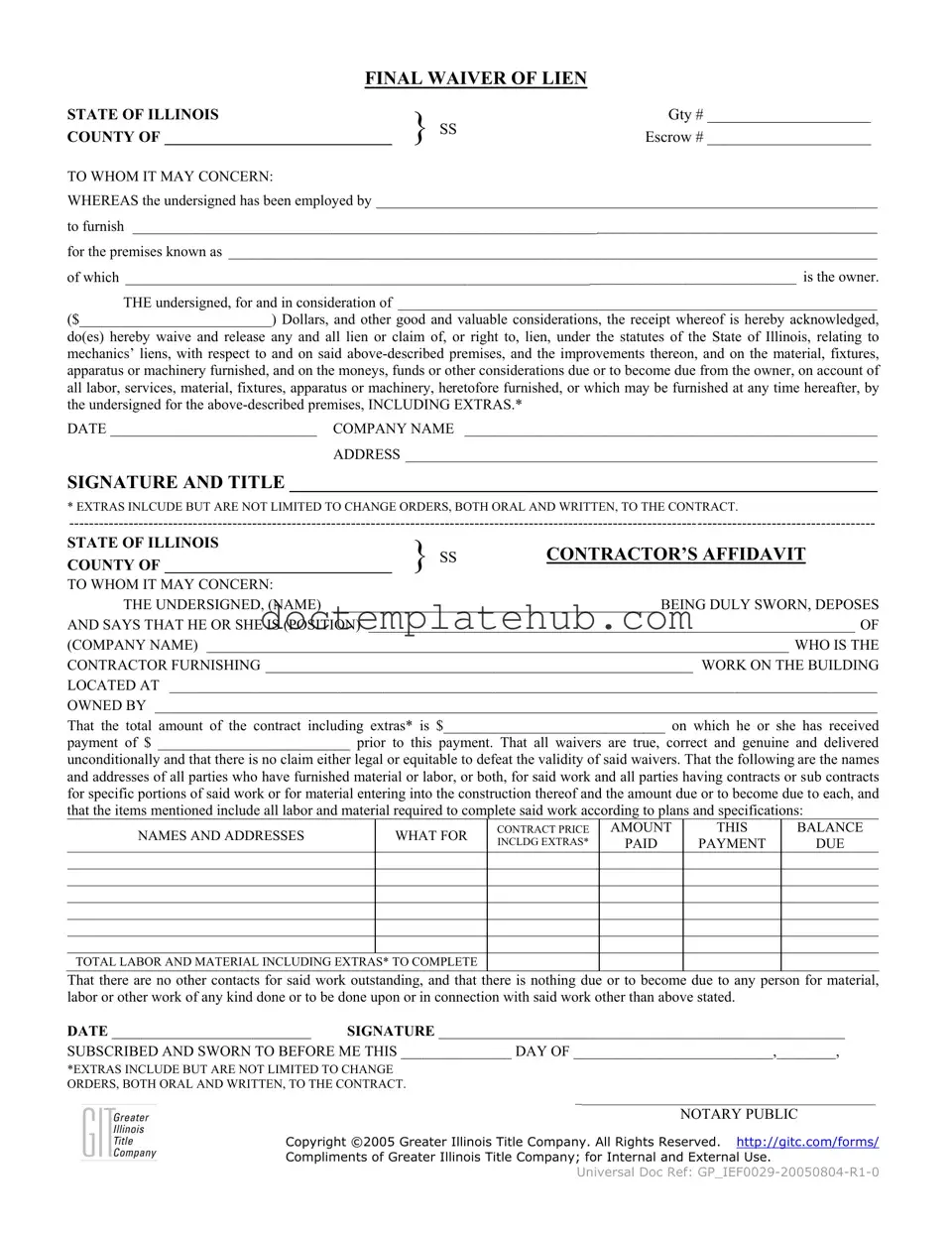What is the Illinois Final Waiver of Lien form?
The Illinois Final Waiver of Lien form is a legal document used in construction and contracting situations. It serves to release any claims or liens that a contractor, subcontractor, or supplier may have against a property owner for work performed or materials supplied. By signing this form, the undersigned acknowledges receipt of payment and waives the right to file a lien against the property for the work completed. This helps ensure that all parties involved in a construction project are clear about payments and obligations.
Who should use the Illinois Final Waiver of Lien form?
This form is typically used by contractors, subcontractors, or suppliers who have provided labor or materials for a construction project in Illinois. If you are a party that has worked on a property and have received payment, this form is essential for formally waiving your right to place a lien on the property. It protects both the contractor's interests and the property owner's by clarifying that all payments have been settled.
What information is required to complete the form?
To properly fill out the Illinois Final Waiver of Lien form, you will need to provide several key pieces of information. This includes the name of the property owner, the description of the work or materials provided, the total amount of the contract, and the amount paid prior to this waiver. Additionally, you will need to list any extra work or change orders that may be relevant. Signature and date are also required to validate the document.
What happens if I do not use the Final Waiver of Lien form?
If you choose not to use the Illinois Final Waiver of Lien form, you may retain the right to file a lien against the property for unpaid work or materials. This could lead to legal disputes and complications in the payment process. Without this waiver, property owners may not have a clear understanding of their obligations, potentially resulting in misunderstandings or conflicts down the line.
Is the Illinois Final Waiver of Lien form legally binding?
Yes, once properly completed and signed, the Illinois Final Waiver of Lien form is legally binding. It signifies that the undersigned has received payment and waives any future claims against the property for the specified work. It is crucial to ensure that all information is accurate and that the form is executed correctly to avoid any potential legal issues in the future.
